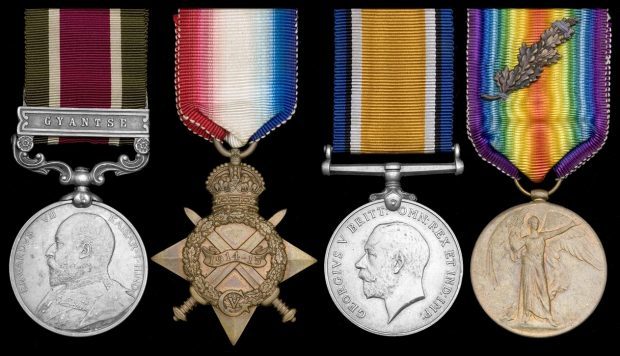A medal collector is on the trail of a north-east surgeon who served in World War I.
Aberdeenshire man Andrew Watson Cook-Young served in a number of British colonial campaigns in the early 20th century.
Now Martyn Lovell, president of Northern Branch Orders and Medals Society, is trying to find more about the life of the surgeon, who died following an accident in Aberdeen in 1928.
In particular, Mr Lovell – who works in orthopaedics at University Hospital of South Manchester – is interested in the Tibet Expedition.
The campaign took place between December 1903 and September 1904, when British forces ostensibly attempted to re-establish diplomatic relations between Tibet and neighbouring Sikkum.
But the British were also keen to quell Russia’s growing influence in the region.
Mr Lovell said: “Cook-Young was one of 30 doctors in support, I would be grateful for any information anyone has, and information if available regarding his last accident.”
Born in Chapel of Garioch, on 25 February 1876, Cook-Young qualified as a bachelor of medicine from Aberdeen University in 1898.
He was appointed to the Indian Medical Service as a lieutenant on in 1901, where he was attached to the 31st Punjab Infantry, and then the 10th Lancers the following year.
He was severely wounded while serving in Tibet, when he was attacked by a lama.
He also served in World War I, in Russia, Gallipoli, Egypt, and Iraq.
Cook-Young survived the war and eventually retired, but tragically died from a severe burn in Aberdeen, in 1928 – the circumstances surrounding the accident are unclear.
Anyone with any information on Cook-Young should contact Mr Lovell on martynlovell@btinternet.com
